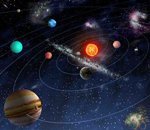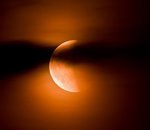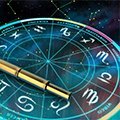Leap years: list, calendar
A leap year (Latin bis sextus - "second sixth") is the year in the Julian and Gregorian calendars, the duration of which is 366 days - one day longer than the usual, non-leap year. In the Julian calendar, every fourth year is a leap year, there are exceptions to this rule from the Gregorian calendar. The calendar year in the Gregorian and Julian calendars is 365 days in non-leap years, and 366 days in leap years. The average duration of the year is 365.2425 days for the Gregorian and 365.25 days for the Julian calendars.
The next leap year is 2028 .
- Leap years, list:
- 1880
- 1884
- 1888
- 1892
- 1896
- 1904
- 1908
- 1912
- 1916
- 1920
- 1924
- 1928
- 1932
- 1936
- 1940
- 1944
- 1948
- 1952
- 1956
- 1960
- 1964
- 1968
- 1972
- 1976
- 1980
- 1984
- 1988
- 1992
- 1996
- 2000
- 2004
- 2008
- 2012
- 2016
- 2020
- 2024
- 2028
- 2032
- 2036
- 2040
- 2044
- 2048
- 2052
- 2056
- 2060
- 2064
- 2068
- 2072
A year is a conventional unit of time, which historically means a single cycle of seasons (spring, summer, autumn, winter). In most countries, the calendar duration of the year is 365 or 366 days. Currently, the year is also used as a temporary characteristic of the circulation of planets around stars in planetary systems, in particular, the Earth around the Sun.
In any leap year, the number of days is longer than usual, because In February another additional day is added - on February 29. Therefore it is necessary to know the number of additional days spent in leap years. It is easy to calculate, using the leap table in the XIX and XXI centuries. Leap years come after three non-leap years and are always only even. Every second even year of the Gregorian calendar is a leap year.

Sunrise sunset today
Select the desired date in the calendar and find out information about the sunrise and sunset of the Sun and other planets. Go

Planetary day and hour today
The correspondence of days and hours to planets is based on the ancient Chaldean astrological order of the planets. Go

The current position of the planets
This astrological service allows you to calculate the current position of the planets of the solar system. Go

Solar eclipses
The astronomical phenomenon, which consists in the fact that the Moon eclipses the Sun from the observer on Earth. Go

Lunar eclipses
Lunar eclipses occur when the natural satellite of the Earth - the Moon appears in the shadow of our planet. Go

The day of equinox and solstice 2025
The astronomical seasons do not coincide with the calendar and are replaced in the days of the solstice and equinox. Go






